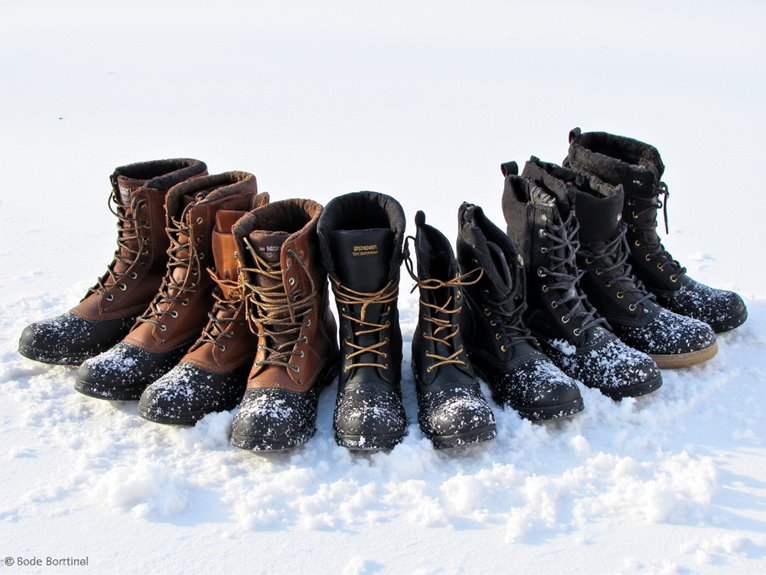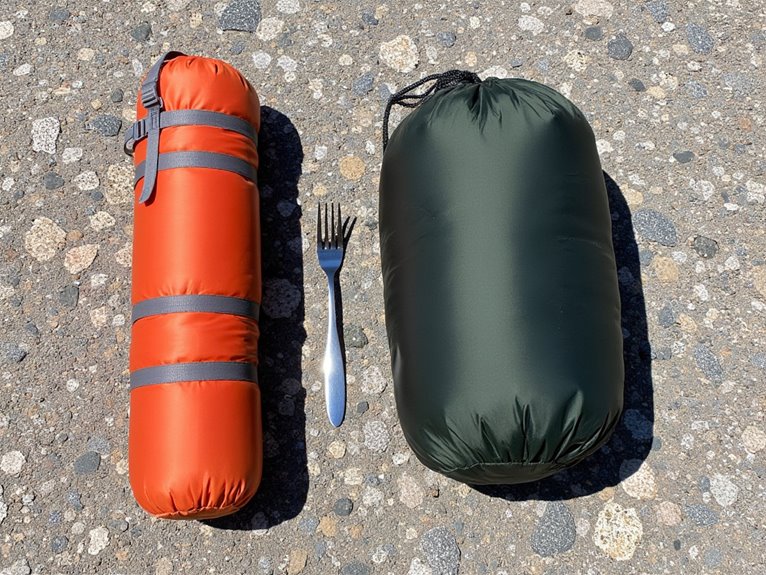What Size Backpack Do I Need for Thailand?
The ideal backpack size for a trip to Thailand depends on the length of stay, climate, and activities planned, with trip duration being the primary factor in determining the necessary pack size. A shorter trip of 3-5 days requires a smaller backpack, typically 30-40 liters, while longer trips necessitate larger packs, 50-60 liters or more. Understanding the climate and activities planned helps determine the right backpack size, ensuring a comfortable travel experience. As you prepare for your Thai adventure, consider the intricacies of packing and packing strategies to guarantee a stress-free journey ahead.
We are supported by our audience. When you purchase through links on our site, we may earn an affiliate commission, at no extra cost for you. Learn more. Last update on 20th January 2026 / Images from Amazon Product Advertising API.
Determining Your Trip Length Matters
The duration of your trip to Thailand is a critical factor in determining the ideal backpack size, as it directly influences the amount of clothing, gear, and supplies you'll need to pack.
A shorter trip of 3-5 days requires a smaller backpack, typically 30-40 liters, to carry only the essentials.
For a 1-2 week trip, a 40-50 liter backpack is suitable, allowing for more clothing and personal items.
Longer trips of 3-4 weeks or more necessitate a larger backpack, 50-60 liters or more, to accommodate additional gear and supplies.
Accurately estimating your trip length helps you choose the right backpack size, ensuring a comfortable and convenient travel experience in Thailand.
Packing for Different Climates
Thailand's diverse geography and climate zones, ranging from tropical islands to mountainous regions, demand careful consideration when selecting what to pack for your trip.
The southern islands, such as Phuket and Koh Samui, require lightweight, breathable clothing and sun protection.
In contrast, the northern regions, including Chiang Mai and Chiang Rai, can be cooler, especially in the evenings, so it's essential to pack layers.
The northeastern region, known as Isaan, is known for its dry and dusty climate, requiring clothing that protects against the elements.
Understanding the climate of your destination will help you pack efficiently and effectively, ensuring a comfortable and enjoyable trip.
How Many Clothes to Bring
Packing clothes for Thailand requires finding a balance between bringing enough essentials and avoiding unnecessary bulk in your backpack.
A good rule of thumb is to plan for 3-4 daily outfit changes, considering the activities you have planned and the varying dress codes for different occasions.
Packing Essentials
A week's worth of clothing is a good starting point for packing essentials, as it allows for a few outfits and some flexibility in case of unexpected delays or changes in plans.
This includes 3-4 tops, 2-3 bottoms, and 1-2 dresses or jumpsuits.
Undergarments and socks should be packed in sufficient quantities, considering the length of your trip and laundry facilities.
A lightweight rain jacket and warm layer for cooler evenings are also must-haves.
Quick-drying, breathable fabrics are ideal for Thailand's tropical climate.
Don't forget to pack essential accessories like a hat, sunglasses, and a sarong for added versatility.
Daily Outfit Choices
With a solid foundation of packing essentials in place, the next step is to ponder the daily outfit choices that will facilitate a comfortable and stylish journey through Thailand.
When deciding how many clothes to bring, consider the activities you plan to do, the climate, and cultural norms.
Aim for 3-5 tops, 2-3 bottoms, and 1-2 dresses or jumpsuits. Pack lightweight, quick-drying, and breathable clothing that can be easily mixed and matched.
Don't forget to include a few nicer outfits for evening events or temple visits.
Remember, you can always do laundry or have clothes washed and dried at local shops.
Electronics and Accessories Space
In addition to clothing and toiletries, a significant portion of your backpack's space will be allocated to electronics and accessories, which are essential for staying connected, capturing memories, and exploring unfamiliar territories.
When packing electronics, consider the essentials: a laptop, tablet, or e-reader for entertainment and research, a smartphone for communication and navigation, and a portable charger to keep devices powered up.
Don't forget adapters, converters, and cables to keep your devices charged and connected. Additionally, allocate space for accessories like camera equipment, headphones, and a power bank.
When choosing a backpack, verify it has dedicated compartments and pockets to protect and organize your electronics, keeping them safe and within reach.
Toiletries and Personal Care
Your toiletry bag should contain a carefully curated selection of essentials, tailored to your personal needs and the specific demands of travel in Thailand.
Pack a refillable toiletry bag with must-haves like toothbrush, toothpaste, dental floss, and any personal medications.
Don't forget essentials like shampoo, conditioner, and body wash, which can be decanted into smaller containers to save space.
A travel-sized hairbrush, contact lenses or glasses (if applicable), and a small first-aid kit should also be included.
Be mindful of Thailand's humid climate and pack accordingly, with products that cater to your skin type.
Additionally, consider packing a small supply of baby wipes, hand sanitizer, and insect repellent to stay clean and protected on-the-go.
Activities and Gear Requirements
Pack strategically for Thailand's diverse outdoor activities by considering the gear requirements for each pursuit, from snorkeling and rock climbing to hiking and temple trekking.
For water-based activities, bring a lightweight snorkeling set, water shoes, and a quick-dry towel.
Climbers will need harnesses, ropes, and climbing shoes.
Hikers should pack sturdy boots, trekking poles, and a waterproof jacket.
Temple trekkers require comfortable shoes and lightweight clothing.
Consider the duration and intensity of your activities to determine the necessary gear.
Prioritize essentials and pack multi-use items to minimize luggage space.
A well-planned gear list will guarantee a comfortable and enjoyable adventure in Thailand.
Sharing a Backpack or Not
When traveling with a partner or group, one crucial decision to make is whether to share a backpack or use individual packs.
Sharing a backpack can be convenient, as it reduces the overall weight and bulk to be carried, making it easier to navigate airports, buses, and trains.
However, it also means compromising on personal space and having to coordinate packing and unpacking.
On the other hand, individual packs provide autonomy and flexibility, allowing each person to pack according to their needs and preferences.
Ultimately, the decision depends on individual circumstances, such as the length of stay, type of activities, and personal comfort levels with shared space.
Backpack Size for Specific Regions
Tailoring backpack size to specific regions, such as Thailand, is essential, as varying climates and activities dictate differing packing needs.
If you're heading to the beaches of Phuket, a smaller backpack (30-40L) might suffice, whereas trekking in Chiang Mai may require a larger pack (50-60L) to accommodate hiking gear and clothing for varying weather conditions.
When choosing a backpack size, consider the following regional factors:
- Island-hopping in southern Thailand: smaller backpack (30-40L) for lighter packing
- Trekking in northern Thailand: larger backpack (50-60L) for bulkier gear
- Urban exploration in Bangkok: medium-sized backpack (40-50L) for versatility


